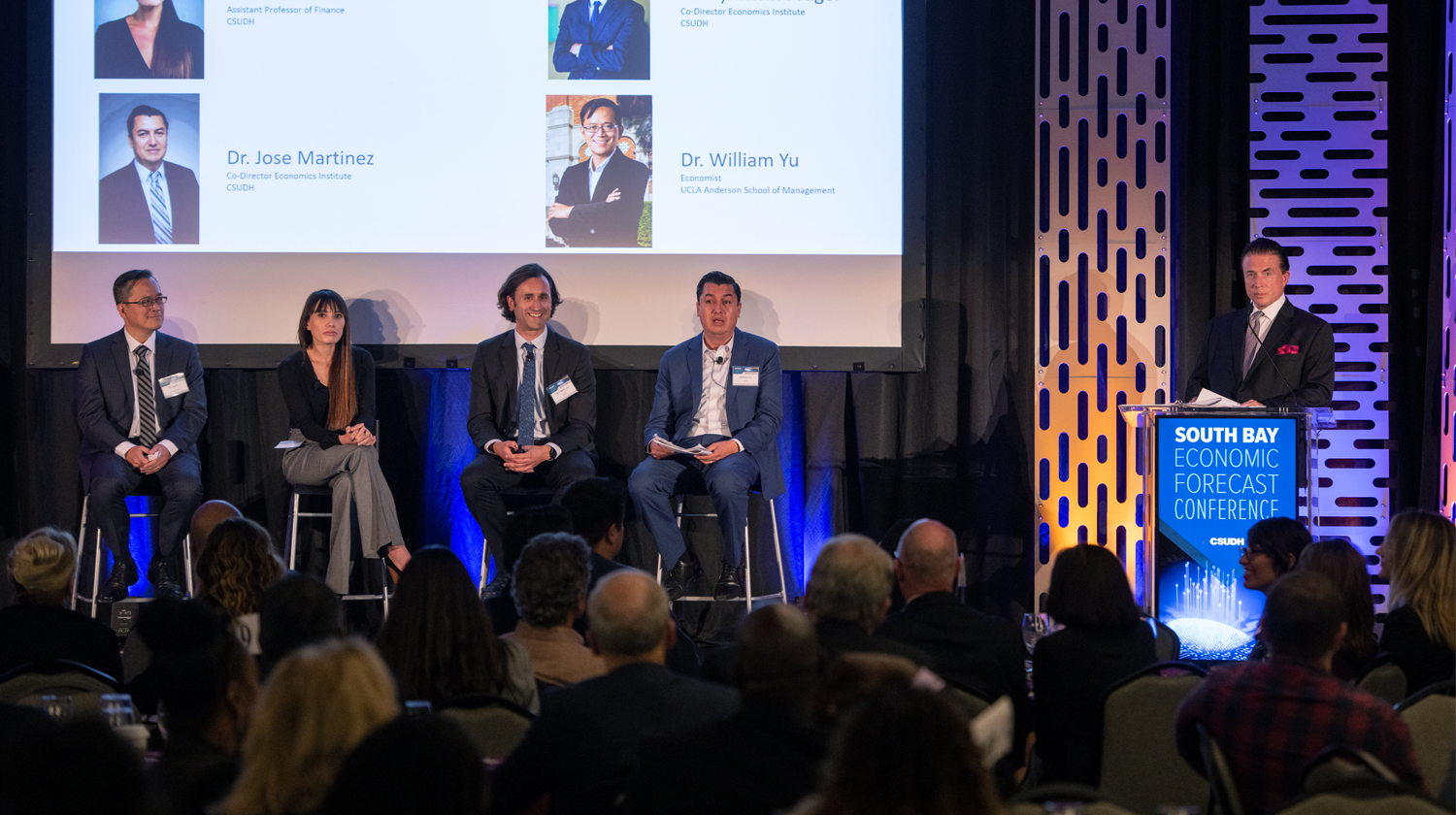
The South Bay’s economy is expected to downshift in 2020, along with the national and global economies, but will remain stable, according to the fifth annual South Bay Economic Forecast, which was released Tuesday afternoon, Oct. 29.
Despite the downshift, the report never mentioned the word “recession.”
The report was commissioned by the South Bay Economics Institute at Cal State Dominguez Hills, in Carson, and released during a conference of regional business leaders titled “A Region in Transition: Advances in Innovative Technology.” The forecast discussed 2020 and looked back at some of the economic data from 2018; it did not, however, discuss the region’s economy so far this year.
Between 2011 and 2018, South Bay employment grew at an annual clip of 2.2%, driven in large measure by aerospace and defense companies making sophisticated products that, in turn, require a skilled and highly-paid workforce, said William Yu, an economist with the UCLA Anderson Forecast who wrote the 16-page report.
There were 62,600 manufacturing jobs in the South Bay last year, generating $1.48 billion in wages – making the sector easily the largest job creator in the South Bay. The annual wage in the sector was $95,000 in 2018, up from $91,000 in 2017, Yu said.
“The most important driver of (the) South Bay’s economy is the manufacturing sector, the crown jewel of which is the aerospace and defense industry,” Yu wrote. “We predict that (the) South Bay’s growth rate will remain stable over the next year, mostly due to the continued high level of the federal government’s defense budget.”
Large defense contractors, such as Raytheon, Boeing and Northrop Grumman, all have major presences in the South Bay.
Yu also singled out Hawthorne for its “remarkable” job growth, which has exceeded the rest of the South Bay and Los Angeles County. Hawthorne’s growth has been driven largely by SpaceX, the Elon Musk aerospace company that’s based there, Yu said. SpaceX, however, shed about 10% of its workforce – almost 600 jobs – in January.
The arts, entertainment and recreation sector, meanwhile, grew 21% in the 2017-2018 fiscal year. That bolstered the sector’s overall growth rate of 7.3% between the 2011 and 2018 calendar years.
The health care and social services sector also saw increased employment between 2011 and 2018, averaging 7% job growth annually. It added 53,500 jobs last calendar year, second only to the manufacturing sector.
Overall, the average wage in the South Bay was $62,300 in 2018, marginally higher than the county average of $60,000.
Those relatively high wages will help fuel “a very modest increase in home sales” next year, said Jose Martinez, an economics professor at Dominguez Hills.
Another mortgage crisis on the scale of the one that helped trigger the Great Recession, he added, is “not likely.”
“The relaxation of lending practices that we saw in the previous crisis and subsequent recession has not returned,” Martinez said. “At the same time, speculative investing in housing is relatively mild, so we might be able to say that housing will not cause another mortgage crisis and subsequent recession, at least not in the short run.”